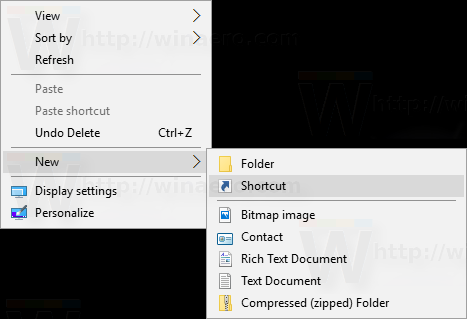of the user, or just UAC is part of the Windows security system that prevents applications from performing unwanted changes to your PC. When some software tries to change the parts related to the system registry or file system, Windows 10 displays a confirmation dialog box UAC, the user must confirm if he really wants to make these changes. Typically, applications that require elevation are related to managing Windows or your computer in general. A good example would be the application Registry Editor. If the application that you use frequently requires UAC asks every time you start, confirming the prompt every time you start can be a bit boring. In this article we will see how to create a shortcut to run elevated applications without UAC prompt in Windows 10.
To jump start the UAC prompt and high application, you must create a special task in the Windows task Scheduler that allows applications running with administrator privileges. The Task Scheduler is a graphical version of MMC (taskschd.msc) that we will use.
In the tutorial below, I will show you how to run Regedit high without UAC prompt to appear. You can use these steps for each application you want to launch high.
Creating a shortcut to run elevated applications without a UAC prompt in Windows 10
- Open. Control Panel
- Go to the Control Panel System and security Administrative Tools
- In the new window, double-click the shortcut "Task Scheduler" :.
- In the left pane, click the "Scheduler Library task"
- In the right pane, click the "Create task":
- a new window entitled "Create task" will be opened in the "General" tab, specify the name of the task Choose an easily recognizable name like "name App - high"... my Then I'll use "Regedit - high"
you can fill in the description if you want
- Now select the box labeled "Run with highest privileges.".
- Go to the "Actions" tab Here, click the "New ..." button.
- the " new Action "will open. There you can specify the path of the executable (.exe) of the application that you try to run higher without a UAC prompt. In my case, I'll get
c: windows regedit.exe
See the following screenshot:
Note: By default, applications started tasks like we just created will begin homeless. Their windows may appear in the background
If you are not satisfied with this, and then use the following trick :.
- In "Program / Script", enter the following:C: windows system32 cmd.exe
In "Add agruments," type the following:
/ c start "" program.exe [program arguments if required]
In my example with Regedit it will look as follows :.
- Click "OK" in the "New Action dialog box" to apply your settings and close
- Go to the tab "Terms":
Options Uncheck
- Stop if the computer switches to battery power
- Start the task only if the computer is plugged in
See the capture of next screen:
- now, click "OK" to close the "Create a task". Now that you have created the task, it is a good time to test it. Right click and select "Run" from the popup menu. You have to open the application you specified :.
- Now, to create a new shortcut to launch the application from your desktop
right click on empty space on your desktop and select New -> shortcut:
- in the location of the item, type the following:
schtasks / run / tn "your task name"
to my case, it should be the following:
schtasks / run / tn "Regedit - high"
- Name your however shortcut you like:
- Finally, choose an appropriate icon for the shortcut you've created and you're done:
watch the video below to see all the action steps:
There. As you can see, creating high shortcuts involves a lot of action and a significant amount of time.
To save your time, you can use Winaero Tweaker. The feature called "Shortcut Elevated" is exactly what is mentioned above and helps you create high shortcuts quickly.
- Download and unzip the Winaero Tweaker app.
- go to Tools Shortcut Elevated
- Create a shortcut with its user friendly interface and finished
Furthermore, there is another good thing about Winaero Tweaker !. By default Task Scheduler executes all tasks below the priority of the normal process. But Shortcut to Elevated Winaero corrects this by running the shortcut to normal priority.
The same can be done in Windows Vista, Windows 7 and Windows 8.


0 Komentar